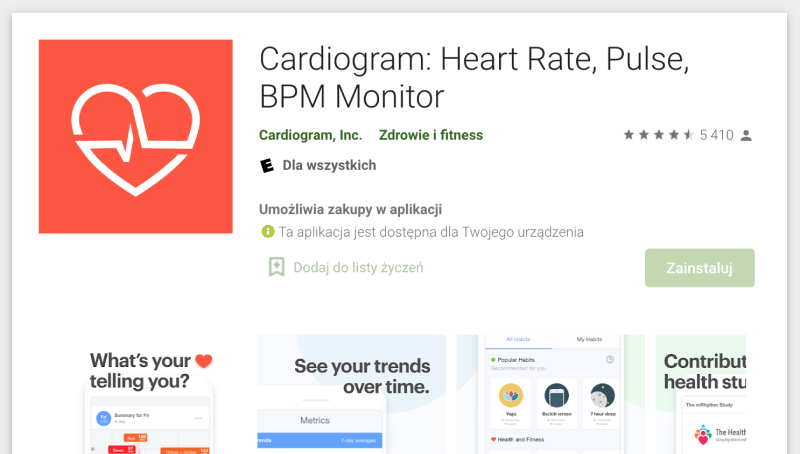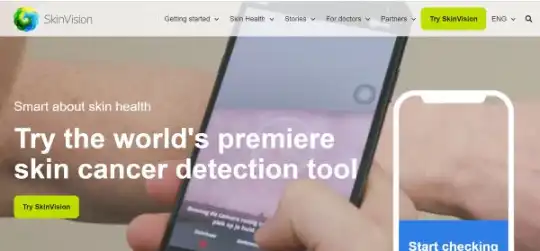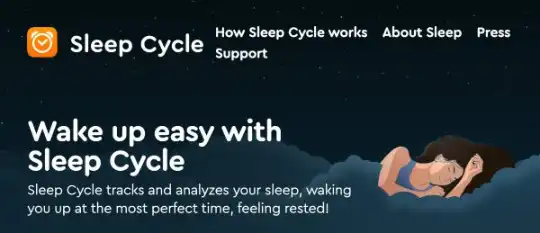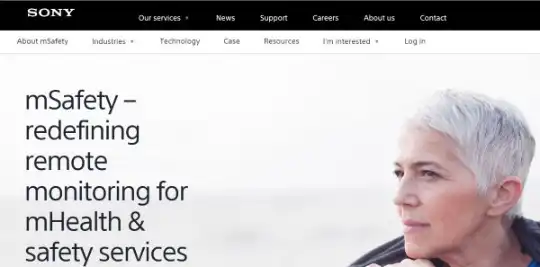Demand for modern mobile applications, including mobile medical apps, is growing at a truly staggering rate.
The market for mobile applications used for medical treatment, preventive health care, and management in medicine is expected to grow over the next few years.
Such a dynamic change will be most visible in the most developed MedTech markets, namely the United States, the United Kingdom, and Germany.
Why have mobile applications become so attractive and helpful, and why will their importance grow? What are the characteristics of designing applications dedicated to the medical industry?
What kind of impression and experience (UX) should be offered by the applications used by patients, doctors, public health decision-makers, and healthcare management?
Whether you are currently healthy or sick, we invite you to read our article, in which we take a look at the characteristics of MedTech and learn about mobile application design patterns.
Enjoy!
MedTech, mHealth, or mobile applications in healthcare
Alright, but what exactly is MedTech or mHealth?
Generally speaking, these are medical applications (and the technologies and solutions that support them) that allow you to manage the patient experience and improve the work of doctors, researchers, and managers that manage health centers (such as hospitals and clinics).
Mobile apps in healthcare are playing an increasingly important role in terms of diagnosis and treatment.
Medical application design encompasses a vast range of work. And these kinds of applications have an equally wide range of users.
This is because a mobile application serves not only patients and doctors but also those who manage the healthcare service and those responsible for public health, acting in support of it.
And let's immediately emphasize that designing this kind of application requires knowledge, experience, and research – testing of mobile applications is even more essential in this case.

A developer of mobile applications created for the purpose of, for example, improving access to healthcare must also be aware of the characteristics of the Patient Journey and the methods of patient segmentation.
The mobile application design must take into account the needs and expectations of different stakeholders, such as a patient, a doctor, a healthy person, a chronically ill person, a young person, and an older person. In a separate article, we have written about UX Research in the medical industry and methods for mapping the patient experience.
Most importantly, the combination of advanced AI (artificial intelligence) technologies, data analysis methodologies, and mobile technologies has made possible what seemed impossible.
As a side note, we would like to add that the relationship between medicine and artificial intelligence and the benefits of such a connection is very intriguingly and comprehensively covered in the series of articles "3 Ways Artificial Intelligence Is Transforming Healthcare", which we highly recommend.
Let's get back to our discussion. When we think of mHealth/MedTech, we naturally have in mind digitized, helpful, relevant, effective, and relatively inexpensive and accessible medical care for patients.
From the perspective of doctors, healthcare workers, and medical care, mobile apps are increasingly popular work tools, as natural as a stethoscope.
When thinking about health apps, you should remember that this is a separate category that should not be confused with wellness apps. The difference is clear and based on clearly outlined criteria.
Well, according to the distinction made in the article "Smartphone Apps for a Healthier Heart":
- Health App makes it possible and is used to diagnose or treat diseases.
- Wellness App is used to monitor and improve overall health. Its function is not strictly medical.
The first is used by patients, people suffering (most often) from chronic diseases. Users of the second category of applications can be both healthy and sick people.
Beware! In marketing communication, these two types of applications are often treated as the same thing, but this is not the correct approach.
Wellness applications also have much broader scope, as they are used to improve a person's physical, mental, and social functioning. They are also used by those seeking spiritual growth.

Such a general distinction obviously does not exhaust the problem. We can divide mobile apps created with health in mind in much more detail.
Mobile applications – health in a digital version
Among the applications classified as MedTech/mHealth you will find software that serves:
- Patients
- Doctors
- Health facility administrators
- Scientists and research institutions – in this variant, apps aim to collect and analyze data to expand medical knowledge.
Of course, often, different groups are users of particular applications. For example, mobile applications, in the case of doctors' providing consultations through a phone, will simultaneously serve patients and doctors. Doctors and administrators.
Frequently, the data collected as part of their operation is used to expand knowledge, serve researchers to make statistical studies, create models, make predictions, or make more accurate diagnoses.

Applications that streamline and automate repetitive, routine processes are also essential to mHealth.
For example, regarding:
- Registering to a doctor's office (both general practitioners and specialists)
- Issuing e-prescriptions
- Reminding about appointments, surgery, tests, and taking medication.
In addition, very popular types of applications within MedTech are those used for:
- Electronic health records (Electronic Health Record – EHR and Electronic Medical Record – EMR) – dedicated to hospitals and clinics
- Visualization
- Training, education, and specialization of medical personnel (often involving augmented and virtual reality technology)
- Creating medical records.
So, as we can see, mobile applications in medicine today cover an extensive range of digital products, serve very diverse purposes, have different functions and roles, and are used by very diverse users.
We should point out that many patients learn how mobile apps work by using modern digital solutions. Seniors are increasingly using health applications.
A boom in MedTech! Current trends in mobile medical applications
To say that the future of medical apps is promising is like saying nothing at all. It is nothing surprising. The coronavirus pandemic has strengthened the MedTech/mHealth industry and made it even more attractive to investors.
If you don't take our word for it, look at the article "The future of digital health technologies in the changing COVID-19 landscape," published on the industry website Med Tech News.
Among other things, it states that the coronavirus pandemic has made online consultation more urgent as well as necessary.

The increasing use of artificial intelligence (AI) is expanding the diagnostic capabilities performed through mobile applications, which is also providing an impulse for investors.
And this means that competition across the world regarding health applications will be even greater. Although it is already very big today.
Technological innovation, usability, good User Experience, and modern and useful functionalities are the basic arguments you need to have in order to win with the competition.
The conclusion is clear and very optimistic. The post-pandemic world will be one in which mobile applications supporting health, treatment, diagnosis, and prevention will be a permanent part of it.
Besides, there is already a huge number (according to various data, medical and wellness apps should be counted in the hundreds of thousands) of helpful apps available today that allow users to:
- Monitor their health condition
- Diagnose diseases
- Remind them to take medication, take measurements, or go to an appointment
- Motivate them to take care of their health
- Warn them about various risks.
Let us quote a report by Global Market Insights, according to which the market for telemedicine services, of which mobile medical apps are a part, is expected to be worth nearly $180 billion by 2026.
The rapid growth of this market is obviously influenced not only by successive waves of coronavirus infections and new and recurring pandemic restrictions (lockdowns) but also by civilization trends.

MedTech, including the health application market, is growing rapidly due to the following:
- Prevalence of chronic diseases
- Increase in civilization diseases (e.g., diabetes)
- Increased life expectancy
- Development of devices, technologies, and preventive and diagnostic programs that can detect diseases at an early stage
- Development of information and communication technologies
- Relative inexpensiveness of mobile applications and the possibility of exploiting their synergistic potential.
Good examples of the last cause of growth in the MedTech market are apps whose users are patients struggling with diabetes. Mobile apps for diabetics not only allow them to monitor their blood glucose levels.
By monitoring behavior, lifestyle, and data from other apps (e.g., counting steps, monitoring weight, summarizing workouts, burned calories, etc.), they allow more precise determination of the insulin doses the patient should take each day.
A holistic approach, based on synthesizing very different data, makes it possible to gain better control over the course of the disease, over the treatment process, and to see the correlations between lifestyle, made choices, and health.
We will take this opportunity to recommend our article "Color vision impairments of interface (UI) users. Accessibility of interfaces for those affected by common diseases", in which we described the problem of the relationship between civilization diseases (including diabetes) and UI Design.
In the design process of mobile apps, in order to offer excellent UX to medical app users, it is also necessary to be aware of the limitations and health issues faced by patients struggling with specific diseases.
Benefits of mHealth – why do we like health applications?
It is increasingly rare to have to convince potential users to see and recognize the benefits of installing and using health apps.
Patient enthusiasm is growing every year, and doctors' skepticism is decreasing, especially as technologies and applications are followed by legal solutions that introduce norms, standards, and means of guaranteeing patient safety.

The most important benefits of using medical apps include the following:
- Greater convenience of the treatment process
- Increased sense of security and care
- Greater sense of control over the treatment process
- Lower costs
- Greater engagement of patients in the treatment and recovery process
- Easier management, sharing, analysis of results, and medical records (this is a benefit also for patients who have all records in electronic form, which is much easier to share)
- And last but not least – better treatment results.
In general, mobile medical apps developed within MedTech should also offer value in the form of:
- Accuracy and adequacy of made diagnoses
- Rightness and ease of decision-making
- Improving health conditions and clinical results
- Suggesting treatment paths through changing habits, choices, and behaviors
- Medical education and raising awareness of the causes, course, and consequences of particular diseases.
Trends in mobile applications developed within mHealth
Although the development of mobile applications designed for treatment, diagnosis, and management requires the involvement of very different specialists and a strictly interdisciplinary approach, they must be very easy to use.

Simply put, they need to be as easy, intuitive, and convenient as using any app that serves a purpose other than caring for our health.
Health applications must be useful and offer the best UX and make the user experience as engaging and attractive as possible.
The functional usability of a health app is definitely not enough. The expectations of today's patients and users are much more complex and sophisticated.
What is equally essential, applications developed for mHealth should be characterized by the following:
- Accessibility for diverse audiences on different devices (a responsive medical app is a necessity)
- Fluidity, positive User Flow
- Convenient and intuitive interfaces
- Strong guarantee of ensuring and respecting the privacy
- Empathy in terms of communicating the security of the collected and processed data
- Higher levels of data security, stability, and reliability of operation.
In general, mobile health apps should provide the following:
- Smooth, seamless registration and login process
- Real, clear, and tangible – not declarative – benefit, a value proposition
- Availability on both platforms (Android and iOS)
- Accessibility and responsive operation on most mobile devices
- Practical, easy-to-understand, and helpful onboarding (that allows people with different competencies, experiences, abilities, and limitations to use the app seamlessly)
- Tools for sustaining engagement (e.g., by providing ongoing information about health status, reasons for health changes, results, goals, etc.)
- Easy communication with doctors (including video consultations), medical services, and other patients
- Tools encouraging community building, support groups
- The need for regular and long-term use
- Attractive data visualization
- Understandable communication that is free of medical jargon.
When designing health applications, or in general when thinking about graphic design for mobile apps, it's worth keeping in mind that while apps like Booking.com are Task driven, apps in MedTech are Goal driven.
And this is a significant issue. You must be aware that this also raises the problem of differences in measurements of success. In the case of task-oriented applications, the measure of success is much easier to express objectively in the form of numbers and percentages.
In the case of goal-oriented applications, measurements of success are often much more subjective, and the goal is sometimes achieved over a much longer period.
Designing the interface of mobile applications with such characteristics involves solving a separate set of design problems.
The need to reinforce motivation and engagement, identify short- and long-term benefits, and articulate goals in more concrete terms is one of the key design issues that health application designers must deal with.
Another is the motivators, that is, the elements, factors, and functionalities that prompt users to select, install, register, and use a health app over a long period.
Among the most important elements that increase the likelihood of achieving these goals is ensuring the following:
- A short time of mastering the use of the application
- High credibility of the application and trust earned through numerous trust indicators
- High data confidentiality
- Tactfulness and empathetic understanding of the specifics of health application usage
- Useful functionalities that realistically help with daily treatment (e.g., reminding you to take medications, informing you of dangerous interactions, necessary precautions, allowing you to better understand test results, etc.).
MedTech – mobile applications in medicine. Summary
- The demand for medical application development is growing every year.
- The market for mobile applications used for medical treatment, preventive health care, and management in medicine is expected to grow over the next few years.
- The leaders of this market are companies and start-ups operating in the United States, Germany, and the United Kingdom.
- Mobile health apps serve patients, doctors, and those who manage healthcare services.
- Health applications are apps that manage the patient experience and streamline the work of doctors and managers who manage health centers.
- For the most part, mHealth solutions offer effective, relatively inexpensive, and easily accessible healthcare for patients.
- Health applications are a separate group category of digital products. It should not be combined or confused with wellness apps.
- Health applications are used by patients and people suffering (most often) from chronic diseases. Wellness applications can be used both by healthy and sick people.
- Applications that streamline and automate repetitive, routine processes (such as e-registration, e-prescriptions, etc.) are also essential to mHealth.
- Health apps for doctors and patients serve very different purposes and have other functions and roles.
- Technological innovation, usability, good User Experience, and modern and useful functionalities are the basic arguments you need to have in order to win with the competition.
- Among other things, mobile health apps allow users to monitor their health, diagnose conditions, remind them to take medications, take measurements, go to appointments, motivate them to take care of their health, and warn them about potential risks.
- Thanks to their holistic approach and synthesis of very different data, mobile health applications provide better control over the course of the disease and the treatment process.
- Mobile Health applications also make it possible to see the correlations between lifestyles, made choices, and health conditions.
- The most important benefits of using health apps are greater convenience of the treatment process, a greater sense of security, care, and greater control over the treatment process.
- Health applications must be useful and offer the best UX and make the user experience as engaging and attractive as possible.
- Mobile health apps should be characterized by accessibility for diverse audiences, fluidity, positive User Flow, and convenient and intuitive interfaces.
- Mobile Health applications are Goal driven.
- Mobile Health applications have a much more subjectively defined purpose. It is achieved over a much longer period.
- The problem of sustaining user motivation, offering benefits in different time perspectives, and expressing goals in more concrete terms is one of the key design problems.
- Among the most important elements that increase the likelihood of selecting, installing, registering, and long-term usage of a health app are ease of use, high credibility, trust, a guarantee of data confidentiality, a clear value proposition, and an empathetic attitude toward the user.



